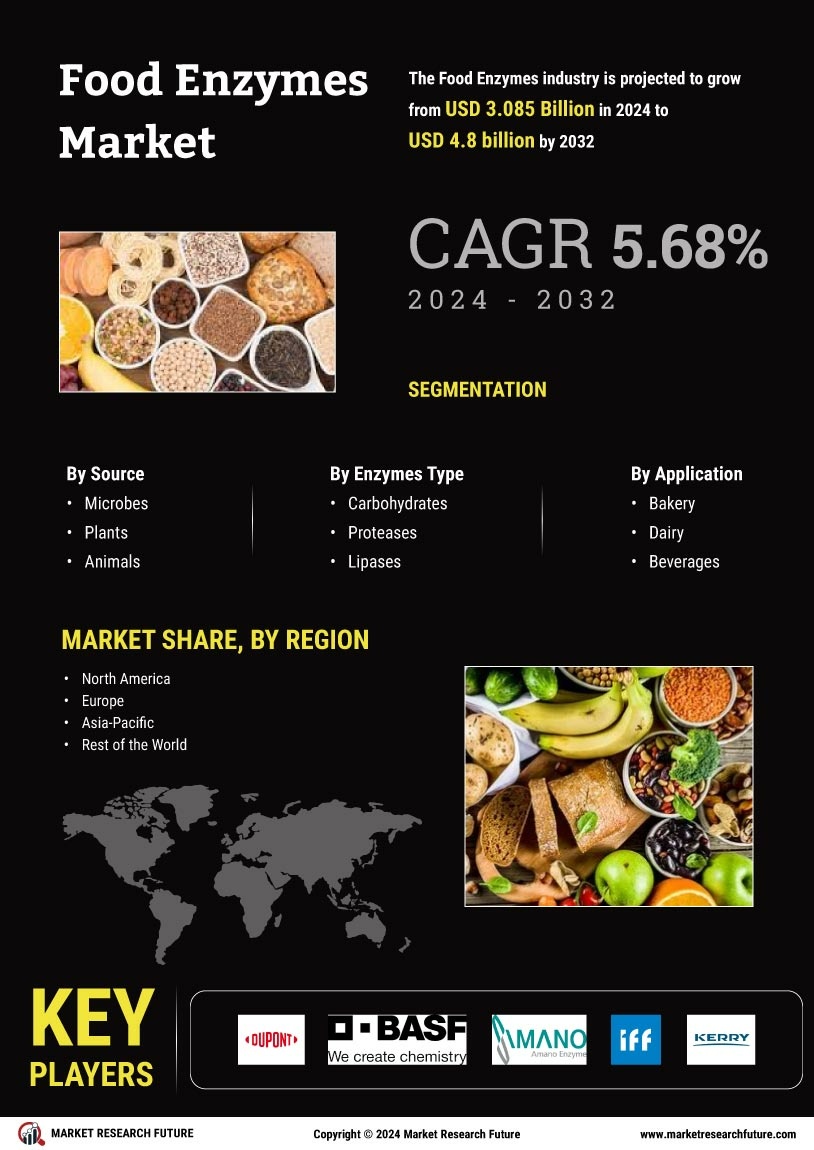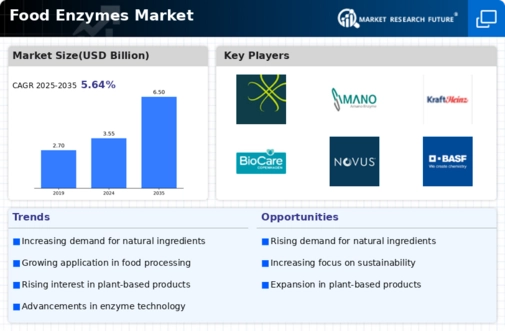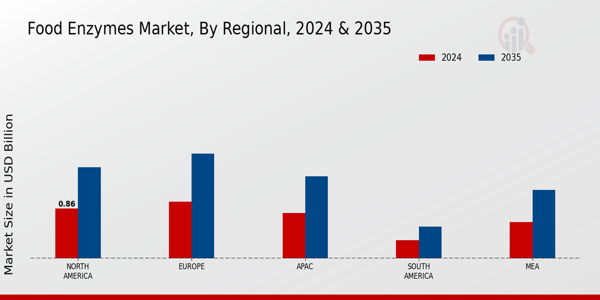Market Growth Projections
The Global Food Enzymes Market Industry is projected to experience substantial growth, with estimates indicating a market value of 3.55 USD Billion in 2024 and a potential increase to 6.5 USD Billion by 2035. This growth trajectory suggests a compound annual growth rate of 5.65% from 2025 to 2035, reflecting the increasing adoption of enzymes across various food applications. The market's expansion is likely to be driven by factors such as rising consumer demand for processed foods, technological advancements in enzyme production, and a growing focus on health and wellness. These projections highlight the dynamic nature of the industry and its potential for future development.
Health and Wellness Trends
The growing focus on health and wellness among consumers is a significant driver of the Global Food Enzymes Market Industry. As individuals become more health-conscious, there is an increasing demand for functional foods that offer health benefits. Enzymes are recognized for their ability to enhance digestion, improve nutrient absorption, and support overall health. This trend is reflected in the rising popularity of enzyme-based dietary supplements and fortified foods. The market is poised for growth as consumers seek products that align with their health goals. The anticipated compound annual growth rate of 5.65% from 2025 to 2035 underscores the potential for enzyme applications in promoting health and wellness.
Rising Demand for Processed Foods
The Global Food Enzymes Market Industry experiences a notable surge in demand for processed foods, driven by changing consumer lifestyles and preferences. As urbanization increases, consumers are gravitating towards convenient food options that require minimal preparation. This trend is reflected in the projected market value of 3.55 USD Billion in 2024, indicating a robust growth trajectory. Food enzymes play a crucial role in enhancing the quality and shelf life of these products, thereby meeting consumer expectations. The industry is likely to benefit from this shift, as manufacturers increasingly incorporate enzymes to improve texture, flavor, and nutritional value in processed foods.
Regulatory Support for Enzyme Applications
Regulatory frameworks supporting the use of food enzymes are fostering growth in the Global Food Enzymes Market Industry. Governments and food safety authorities are increasingly recognizing the benefits of enzymes in food processing, leading to favorable regulations that facilitate their use. This regulatory support not only encourages innovation but also instills consumer confidence in enzyme-containing products. As a result, manufacturers are more likely to invest in enzyme technologies, knowing that they are operating within a supportive regulatory environment. This trend is expected to contribute to the market's expansion, as the industry adapts to evolving regulations and consumer demands.
Sustainability Initiatives in Food Production
Sustainability initiatives are becoming a pivotal driver in the Global Food Enzymes Market Industry. As environmental concerns grow, food manufacturers are seeking ways to reduce waste and improve resource efficiency. Enzymes play a vital role in achieving these sustainability goals by enabling more efficient processing methods and reducing the need for chemical additives. This shift towards sustainable practices is likely to resonate with environmentally conscious consumers, further driving demand for enzyme applications. The industry's commitment to sustainability is expected to enhance its reputation and market presence, aligning with global efforts to promote eco-friendly food production.
Technological Advancements in Enzyme Production
Technological innovations in enzyme production are significantly impacting the Global Food Enzymes Market Industry. Advances in biotechnology and fermentation processes have led to the development of more efficient and cost-effective enzyme production methods. These innovations not only enhance the yield of enzymes but also improve their stability and functionality in various food applications. As a result, manufacturers are increasingly adopting these technologies to optimize their production processes. This trend is expected to contribute to the market's growth, with projections indicating a rise to 6.5 USD Billion by 2035. The integration of cutting-edge technologies is likely to create new opportunities for enzyme applications in the food sector.









